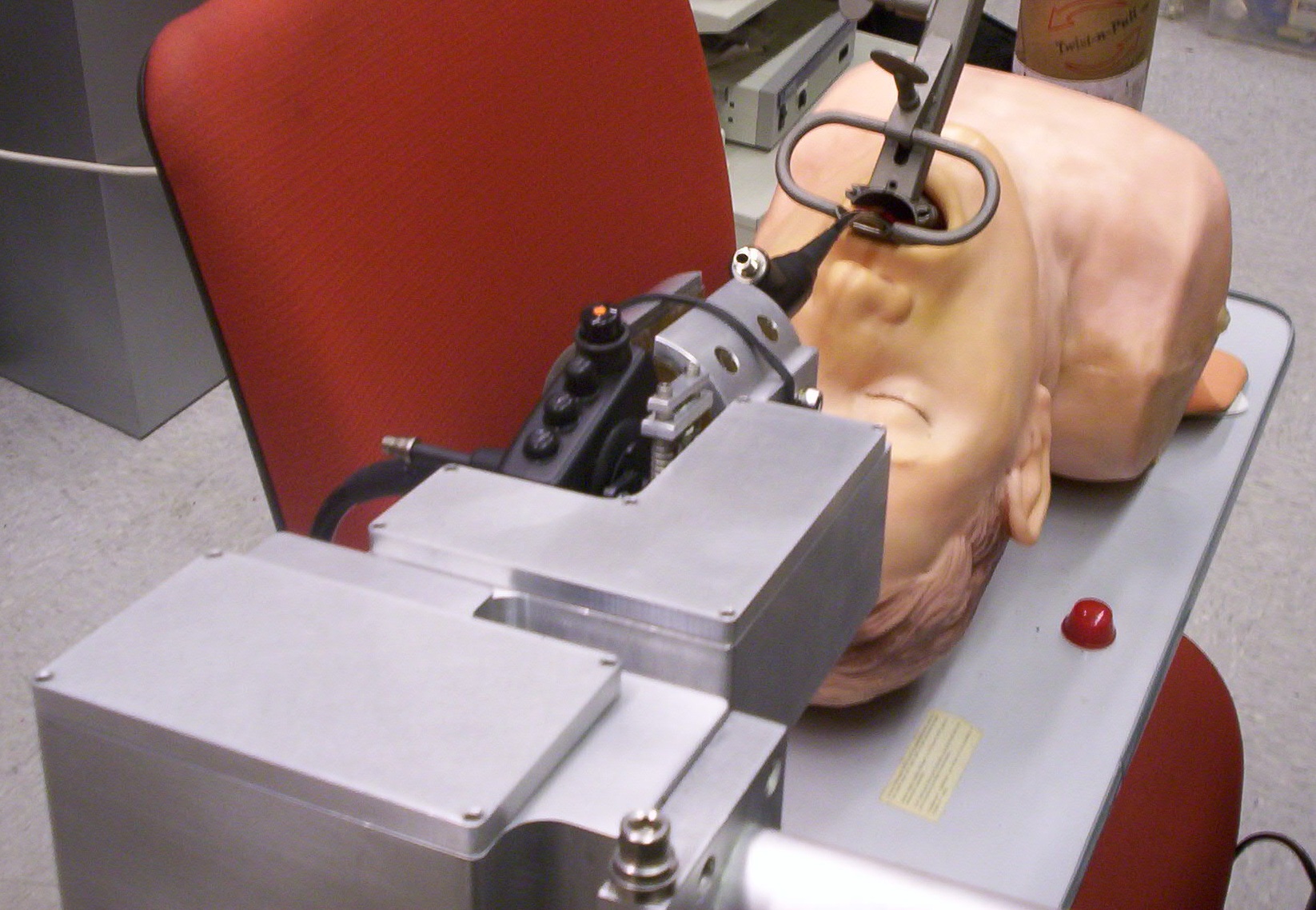Contact Us
CiiS Lab
Johns Hopkins University
112 Hackerman Hall
3400 N. Charles Street
Baltimore, MD 21218
Directions
Lab Director
Russell Taylor
127 Hackerman Hall
rht@jhu.edu
 Over 25,000 new cases of throat cancer are reported every year in the US, resulting in approximately 6,000 deaths per year 1). Since the throat area is fraught with complications for many cancer treatment techniques, such as radiation and chemotherapy, but relatively accessible to surgical techniques, a surgical approach is often taken. Two main surgical techniques are used: conventional surgery, and intra-airway surgery. Intra-airway surgery has many advantages over conventional surgery, including faster healing, less chance of infection, less visible scarring, and less risk of complications, but due to the confined space and poor visibility in the airway, such surgeries are often difficult and time consuming to perform. These difficulties can be partially overcome by using a flexible laryngoscope with a working port, but the problem of adequately controlling the scope with millimeter accuracy for sometimes hours at a time remains. This project seeks to solve this problem by using a robot to control the laryngoscope, thus allowing the surgeon to bypass the details of actuating the scope and focus on the higher level goals of the operation.
Over 25,000 new cases of throat cancer are reported every year in the US, resulting in approximately 6,000 deaths per year 1). Since the throat area is fraught with complications for many cancer treatment techniques, such as radiation and chemotherapy, but relatively accessible to surgical techniques, a surgical approach is often taken. Two main surgical techniques are used: conventional surgery, and intra-airway surgery. Intra-airway surgery has many advantages over conventional surgery, including faster healing, less chance of infection, less visible scarring, and less risk of complications, but due to the confined space and poor visibility in the airway, such surgeries are often difficult and time consuming to perform. These difficulties can be partially overcome by using a flexible laryngoscope with a working port, but the problem of adequately controlling the scope with millimeter accuracy for sometimes hours at a time remains. This project seeks to solve this problem by using a robot to control the laryngoscope, thus allowing the surgeon to bypass the details of actuating the scope and focus on the higher level goals of the operation.
The main goal of this project is to create a robotic scope manipulation system for laryngeal surgery. The be clinically useful, such a system would need to:
Our approach includes a custom built robot to manipulate the endoscope and a software system to allow the surgeon to easily manipulate the scope using only one hand. The RoboELF is a cheap and simple solution to partially automate a simple surgical task.
We created an initial proof of concept prototype using the LARS robot over the summer of 2009. Once this prototype was tested and approved, we began work on a ruggedized clinical prototype in fall of 2009. The first iteration of the ruggedized prototype was completed in spring 2010. After further testing and evaluation, we began the second iteration of the ruggedized prototype, which includes several enhancements and modifications.
Video of First Iteration RoboELF
We submitted an inquiry to the FDA in 2011 to determine the risk level of the RoboELF for human clinical trials. Based on their response, we implemented further design updates to the physical robot and the software system.
Physical Changes:
Software Changes:
We also compiled further documentation including an FMEA, testing plan and user manual. These changes and documents were completed and reviewed in winter 2012. The FDA has classified the system as a low risk device, so we are now awaiting IRB approval for a human subjects study.